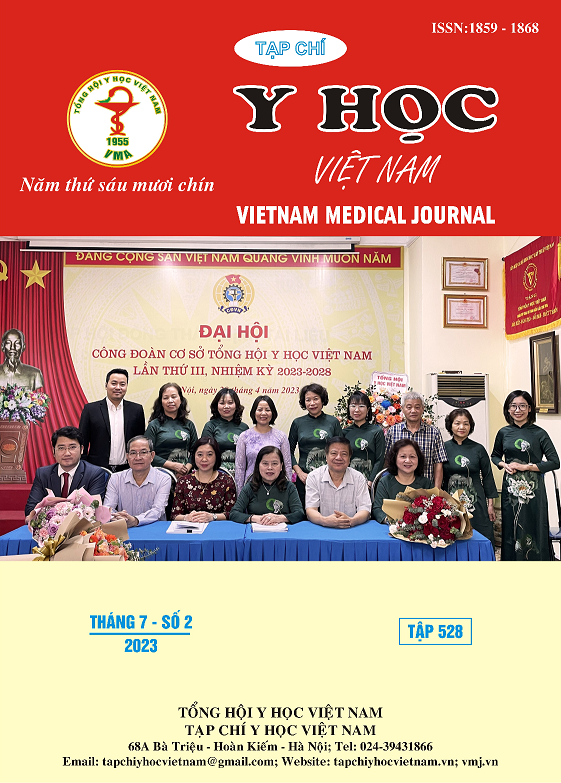CLINICAL, SUBCLINICAL CHARACTERISTIC OF POSTTRAUMATIC THORACOLUMBAR KYPHOSIS PATIENTS
Main Article Content
Abstract
Objective: To describe the clinical, subclinical characteristic of posttraumatic thoracolumbar kyphosis patients. Subjects and methods: 31 patients diagnosed posttraumatic thoracolumbar kyphosis at Spinal department of Viet Duc University Hospital from May 2020 to May 2021 Results: 31 patients were diagnosed posttraumatic thoracolumbar kyphosis the mean age was 59,8±2,2; patients with the age group over 60 years old accounted for the highest propotion with 52,9%. The number of female patients accounted for 73,5%. The time from the onset of symptoms to the going the hospital for surgery is 6,9±4,3 months; the group of 3-6 months accounted for the highest propotion with 52,9%. 17,7% of patients had symptoms of neurological function injury AIS grade D. The mean VAS and ODI preoperative scores are 7,47±0,86 and 63,53%±2,8; the group of IV-ODI grade accounted for the highest propotion with52,9%. The mean preoperative regional angel was 34,4°±1,3. The mean correction angel was 28,2°±1,4. On MRI: 85,3% of patients had edema of vertebral, 20,6% of patients had interspinous ligament and supraspinous ligament injury, 23,5% of patients had compressed spinal canal. Conclusion: The disease mainly affects people age over 60 years old and more common in female. The main onset clinical symptom is thoracolumbar spine pain, limited spine movement maybe neurological function injury.
Article Details
Keywords
kyphosis, posttraumatic, thoracolumbar
References
2. Liu FY, Gu ZF, Zhao ZQ, et al. Modified grade 4 osteotomy for the correction of post-traumatic thoracolumbar kyphosis: A retrospective study of 42 patients. Medicine (Baltimore). 2020; 99(37): e22204. doi:10.1097/MD.0000000000022204
3. Li S, Li Z, Hua W, et al. Clinical outcome and surgical strategies for late post-traumatic kyphosis after failed thoracolumbar fracture operation: Case report and literature review. Medicine (Baltimore). 2017;96(49):e8770. doi:10.1097/MD.0000000000008770
4. Hu WH, Wang Y. Osteotomy Techniques for Spinal Deformity. Chin Med J (Engl). 2016;129(21):2639-2641. doi:10.4103/0366-6999.192774
5. Hu W, Wang B, Run H, Zhang X, Wang Y. Pedicle subtraction osteotomy and disc resection with cage placement in post-traumatic thoracolumbar kyphosis, a retrospective study. J Orthop Surg Res. 2016;11:112. doi:10.1186/s13018-016-0447-1
6. Gardner MJ, Demetrakopoulos D, Shindle MK, Griffith MH, Lane JM. Osteoporosis and skeletal fractures. HSS J. 2006;2(1):62-69. doi:10.1007/s11420-005-0137-8
7. Jo DJ, Kim YS, Kim SM, Kim KT, Seo EM. Clinical and radiological outcomes of modified posterior closing wedge osteotomy for the treatment of posttraumatic thoracolumbar kyphosis. J Neurosurg Spine. 2015;23(4):510-517. doi:10.3171/2015.1.SPINE131011
8. Bedbrook GM. Treatment of thoracolumbar dislocation and fractures with paraplegia. Clin Orthop Relat Res. 1975;(112):27-43.


